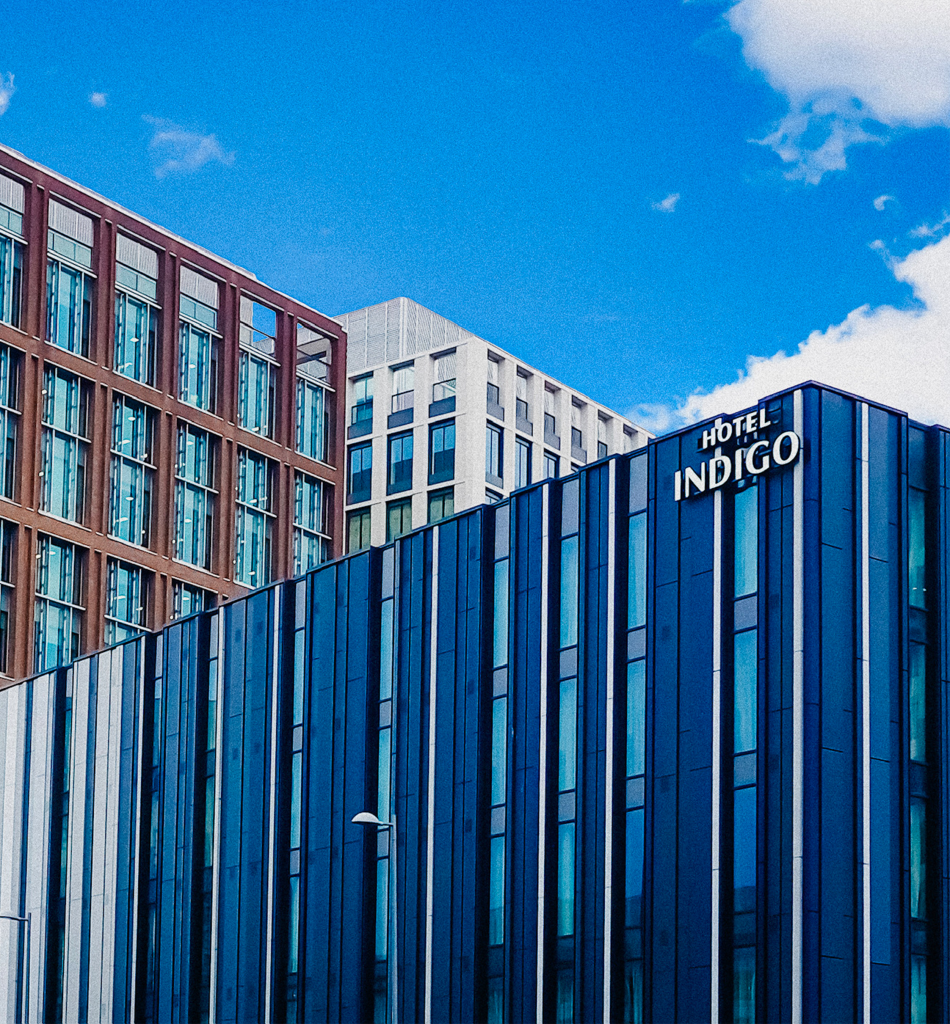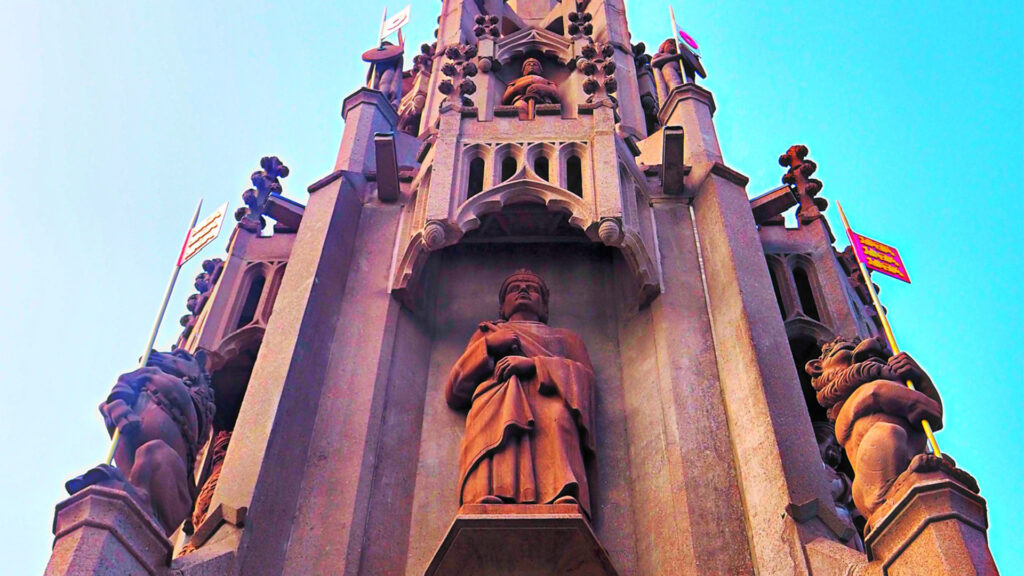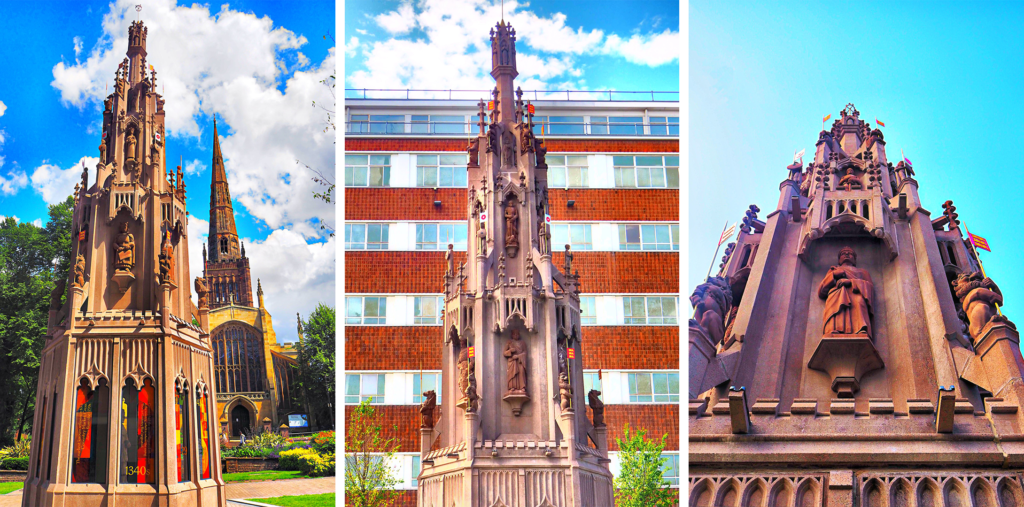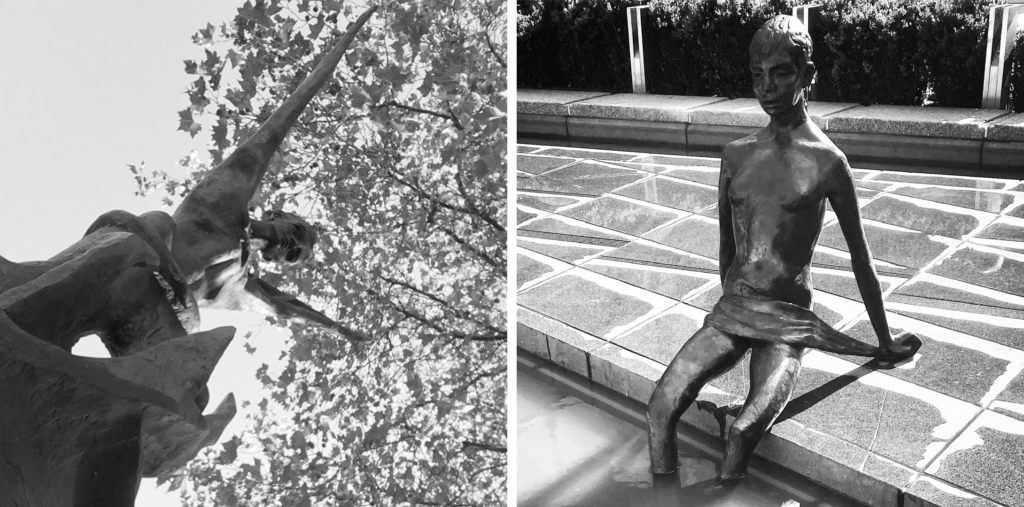The new Coventry Cross was unveiled close to its original site on Broadgate on 13th July 2023. Located just off Cuckoo Lane by the Holy Trinity Church, it hasn’t moved very far. You can find it positioned in a very prominent location at Broadgate. Recreated from the 1976 replica, the new cross now features windows and a 3D-printed statue of King Henry VI.
Plans for the renovations and move were unveiled two years ago after being removed from the street in 2019. The original plans after removal were turned down by planners.
History of the Coventry Cross
“(The Road) Cross Cheaping” derives its name from the original Coventry Cross. This was completed and set up in the year 1423 and taken down in 1510.
In the year 1541, another Cross was commenced and was completed in 1544. It has been founded by Sir William Hollies, a Knight and Once Lord Mayor of London. Also son to Thomas Hollies of Stoke, near this City.
This gothic pile was sexagonal; each side measured seven feet at the base. Featuring finely diminishing, pyramidically, with three stories, each fifty-seven feet high, with eighteen niches. The canopy was beautifully adorned with statues, some of which had been brought from the White Friars.
The pillars, pinnacles and arches were enriched with a variety of figures and flags. The flags displayed the arms of England, the Rose of Lancaster. Representations were also added of the founder, trades, and companies. The whole was so finely finished, that it was inferior to none in England for exquisite workmanship and beauty.
On the summit of the uppermost story was the figure of Justice. Starting with the upper story, St Peter, St James, and St Christopher. In the second story, Edward Ill, St Michael, Henry Ill, St George, and Richard I. Finally, in the lower story, Henry VI, King John, Edward I, Henry II, Richard I, and Henry V.
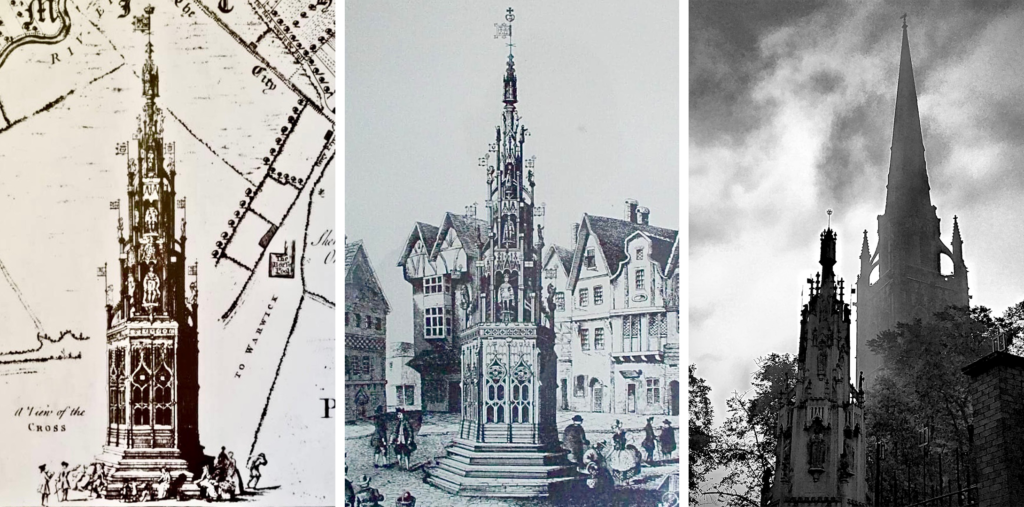
In 1669 the Cross was thoroughly repaired. The repairs include a highly decorated painting, gilding, &c, which became the admiration of the times. Such was the splendid appearance of this Cross at that time that it was said:
“Its lustre was almost too bright to look upon. From this period it was totally neglected, and by the gradual operation of the weather, mouldered away and decayed, until the year ?? when the remains of this once splendid pile were wholly removed.
From the Leaflet produced for the unveiling of the 1976 Replica.
One of the figures from the niches, supposed to be the statue of Henry VI, in good preservation, is now standing near the foot of the staircase leading into Saint Mary’s Hall.”
The New Piece
Plans for the revelations and move were unveiled two years ago after being removed from the street in 2019.
The new replica has been built with several new features including vinyl-endorsed windows at the base telling its history. Included inside the base is a new 3D-printed sculpture of Henry VI. The original sculpture is on display in the Herbert Art Gallery.
“We have an ambitious city and I was pleased that we could use the skills of local people at local companies coming the best of the old and the best of the new into Coventry Cross.”
Councillor David Walsh
The Coventry Cross is now 60 feet tall and features 33 statues of angels, saints, kings and animals. The figure of Christ was removed previously and was replaced by a statue of Godiva. The Crown at the Pinnacle is the original form of the 1976 replica. The original was pictured bigger but the actual was recorded to be 57 feet tall.
The Mind Behind the Coventry Cross
The 1976 replica was designed by George Wagstaff. A sculptor that gave Coventry “The Phoenix” and recently reinstated “Naiad”.
George Wagstaffe is a Coventry-based artist, known predominantly for his sculptures in Coventry City Centre and other major cities.
George was born just before the outbreak of World War II. He grew up witnessing first-hand the destruction and devastation of the 1940 Blitz in both Coventry and Birmingham. These images have stayed with him and have been a major influence on his work throughout his life.
George’s work mainly centres around a number of themes. These include death, rebirth and resurrection, monumental forms splitting apart and decaying. Yet smaller, more delicate forms are created through this destruction.






